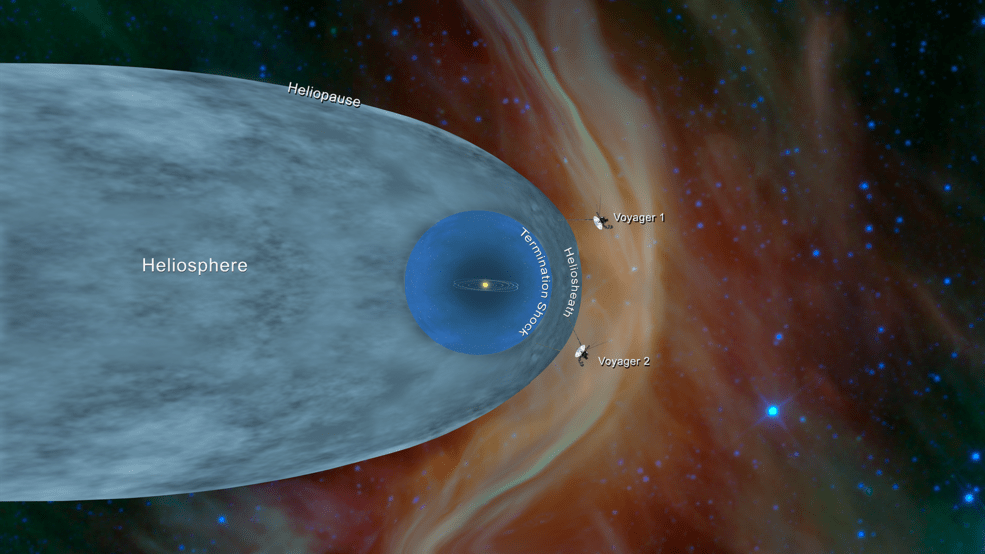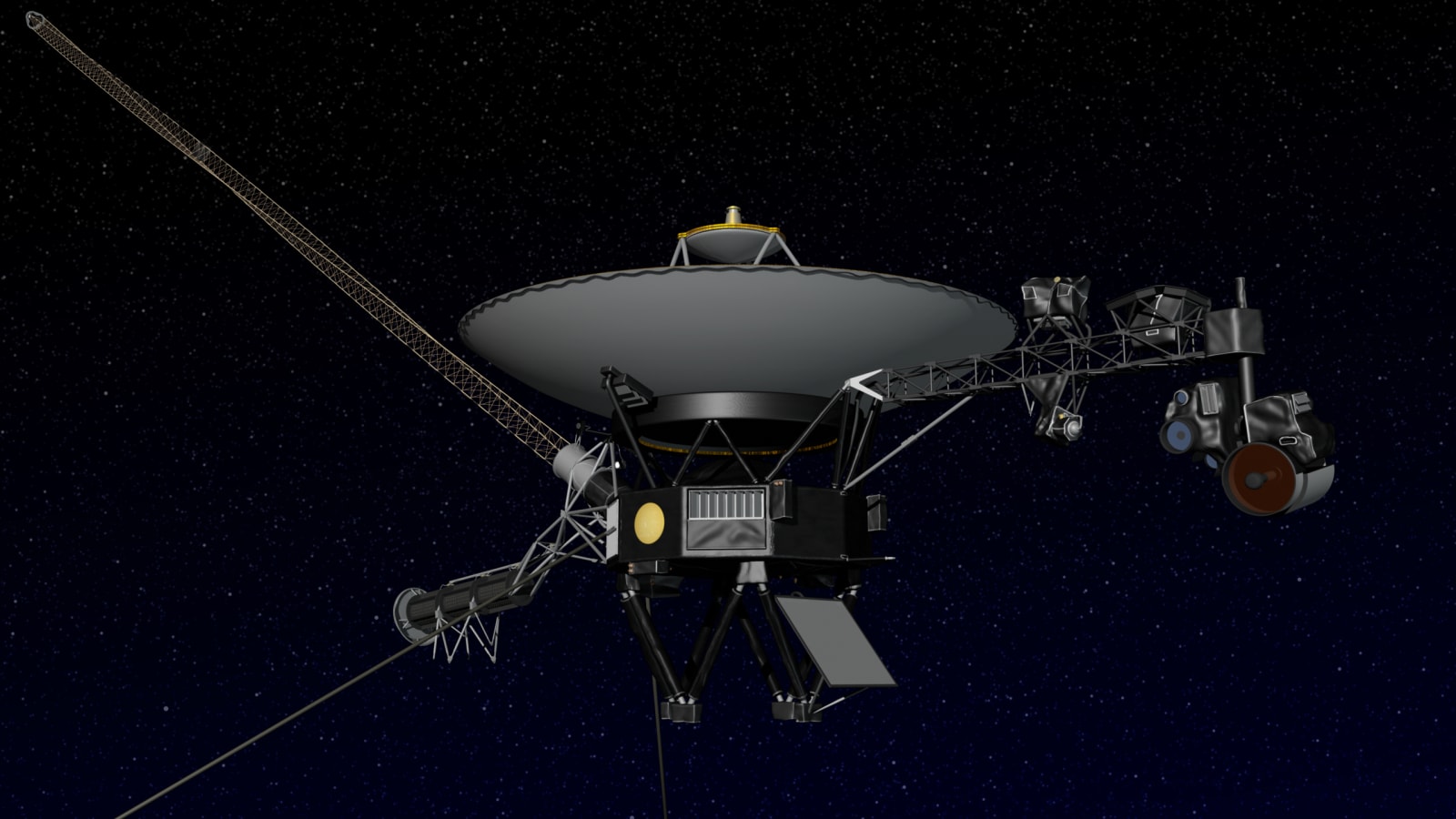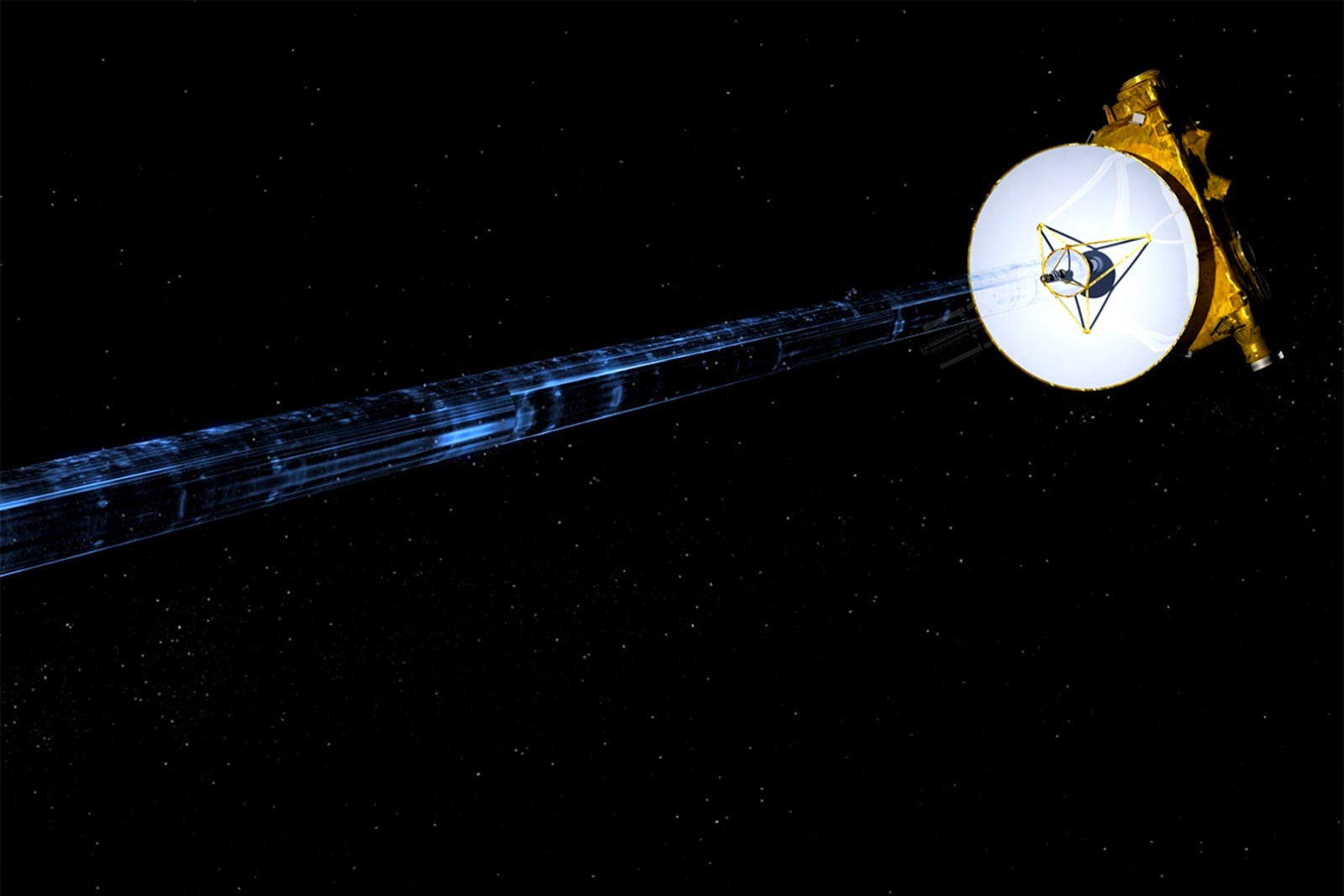
It would be an understatement to say there's been a long build-up to the moment when Voyager 1 ventures into interstellar space: scientists thought the probe was on the edge back in 2010, and we've been waiting for the official milestone ever since. Researchers contributing to an American Geophysical Union journal now believe that the spacecraft may have crossed that symbolic border months ago. Measurements from August 25th onwards show a steep drop in the detected volume of cosmic rays from the heliosphere, just as the extrasolar rays are picking up. Spectrum measurements from the period also mirror those of interstellar regions. On the surface, the clues strongly imply that Voyager 1 has passed the limit of our solar system's influence. NASA, however, disputes the claims -- the agency notes that its vehicle is still traveling the magnetic highway, and it won't have officially escaped the surly bonds of the Sun until the magnetic fields shift. We won't break out the champagne and party streamers, then, but the dispute underscores just how close we are to having another human-made object roaming the galaxy.
Filed under: Science, Alt
Comments
Via: BBC
Source: AGU, NASA
 NASA's Voyager 2 spacecraft has exited the heliosphere -- the plasma bubble created by the sun that encompasses most of our solar system -- and entered interstellar space, making it the second human-made object to do so. Voyager 1 hit this milestone...
NASA's Voyager 2 spacecraft has exited the heliosphere -- the plasma bubble created by the sun that encompasses most of our solar system -- and entered interstellar space, making it the second human-made object to do so. Voyager 1 hit this milestone...
 NASA's Voyager 2 spacecraft has exited the heliosphere -- the plasma bubble created by the sun that encompasses most of our solar system -- and entered interstellar space, making it the second human-made object to do so. Voyager 1 hit this milestone...
NASA's Voyager 2 spacecraft has exited the heliosphere -- the plasma bubble created by the sun that encompasses most of our solar system -- and entered interstellar space, making it the second human-made object to do so. Voyager 1 hit this milestone...
 NASA's Voyager 2 probe may be close to joining its sibling and entering interstellar space. The vessel has been detecting a five percent increase in cosmic rays since late August, suggesting that it's close to crossing the heliopause (the edge of the...
NASA's Voyager 2 probe may be close to joining its sibling and entering interstellar space. The vessel has been detecting a five percent increase in cosmic rays since late August, suggesting that it's close to crossing the heliopause (the edge of the...
 Scientists have learned a bit about the edge of the Solar System from Voyager 1, but there hasn't been a lot of corroborating data without follow-up spacecraft. They appear to be getting a second chance, though. NASA's New Horizons spacecraft has det...
Scientists have learned a bit about the edge of the Solar System from Voyager 1, but there hasn't been a lot of corroborating data without follow-up spacecraft. They appear to be getting a second chance, though. NASA's New Horizons spacecraft has det...

